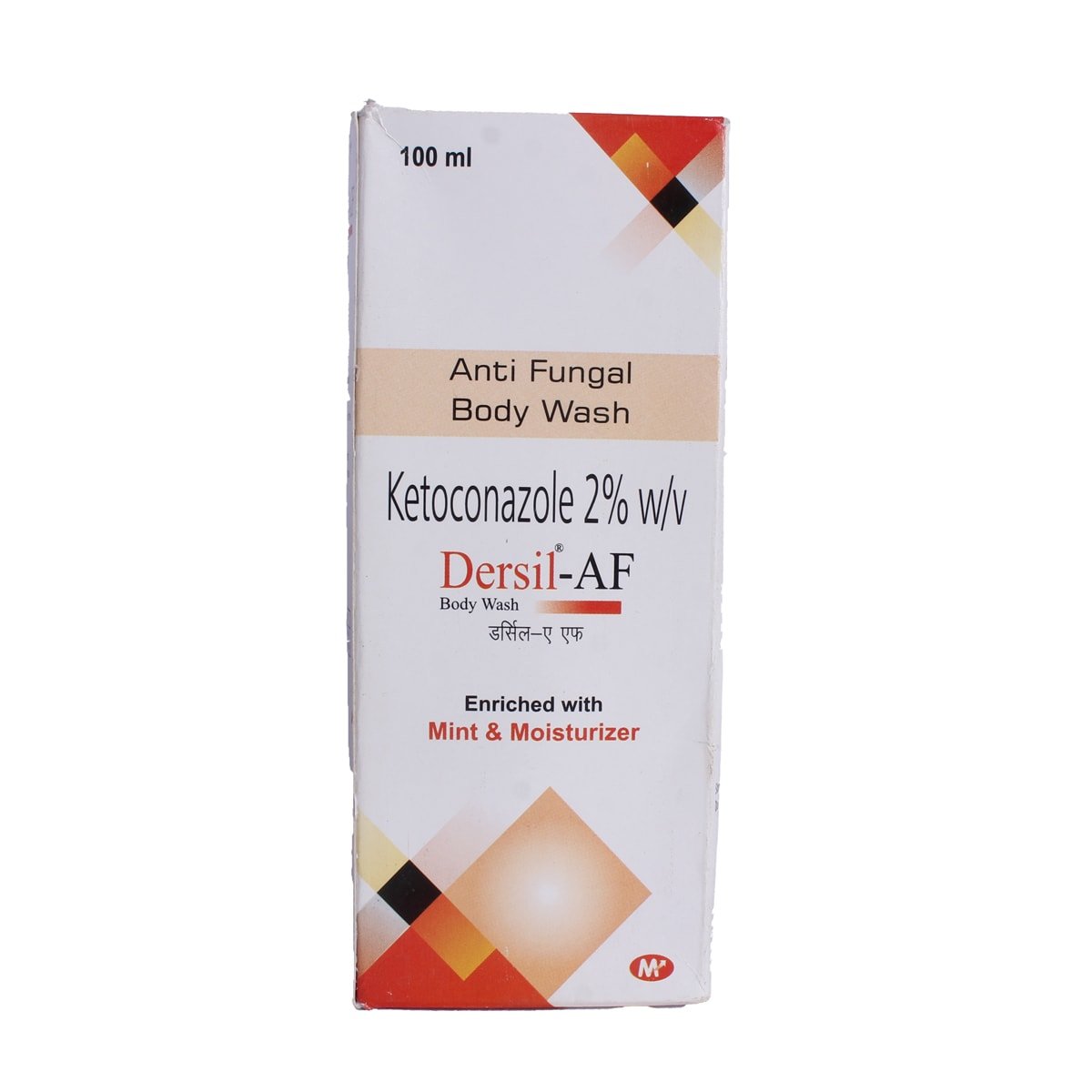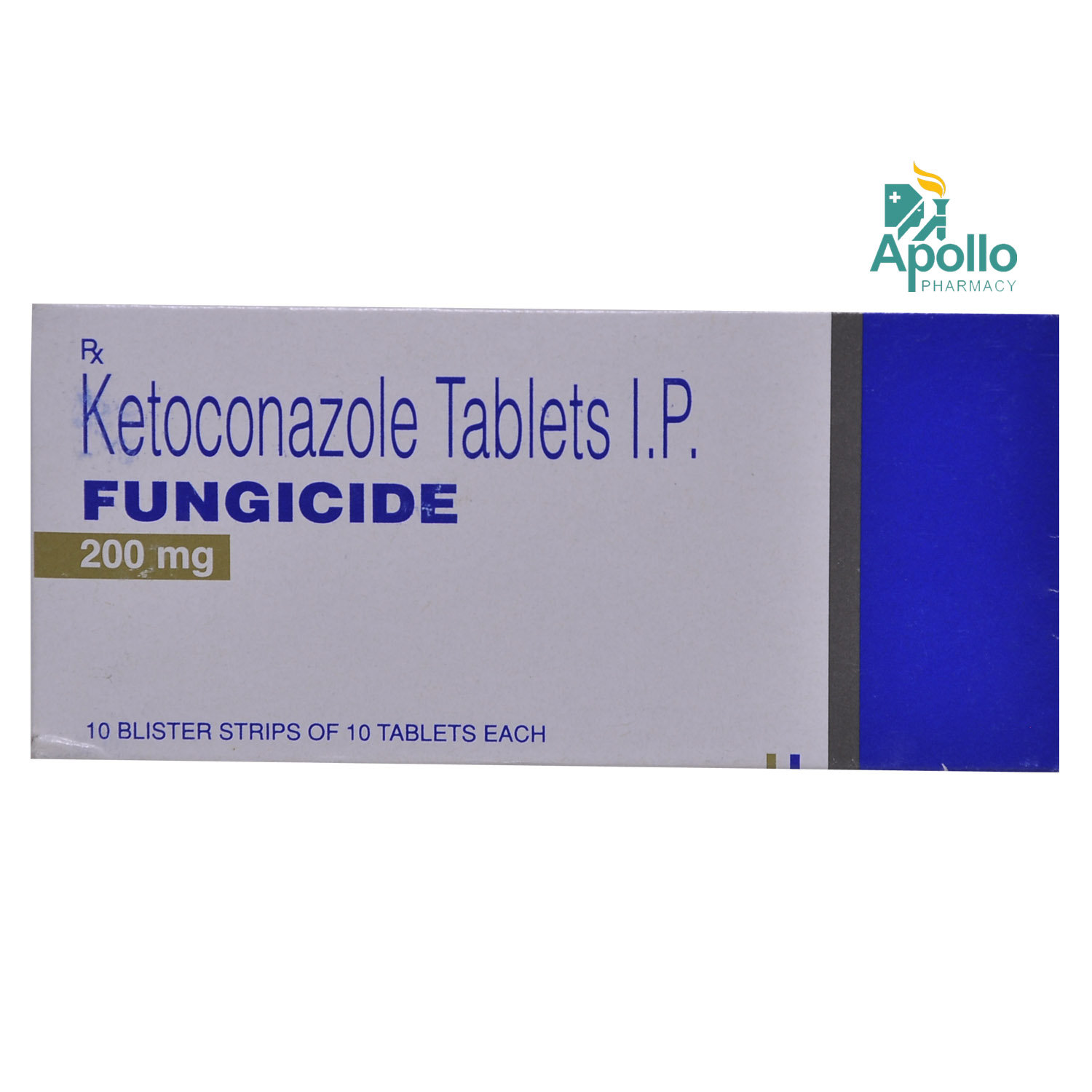Ketoconazole
About Ketoconazole
Ketoconazole belongs to a class of drugs called 'antifungal' primarily used to treat fungal infections of the skin like ringworm, jock itch, athlete’s foot, seborrheic dermatitis (dry, flaky skin on the face, scalp, chest, upper back or ears) and pityriasis (a type of skin rash that causes scaly, discoloured patches on chest, back, legs and arms). Fungal infection is a skin disease in which a fungus attacks the tissue and causes infection. Fungal infections may be contagious (spread from one person to another).
Ketoconazole contains Ketoconazole which works by damaging the fungal cell membranes that are essential for their survival as they prevent the entry of unwanted substances into the cells and stop the leakage of cell contents. Thus, it kills fungi and yeast.
Ketoconazole is for external use only. Your doctor will advise you on how often you need to use Ketoconazole based on your medical condition. Common side effects include dry skin, itching, redness or burning sensation at the application site. Most of these side effects of Ketoconazole do not require medical attention and gradually resolve over time. However, if the side effects persist or worsen, please consult your doctor.
If you are allergic to ketoconazole, inform your doctor. If you are pregnant or a nursing mother, it is advised to consult a doctor before using Ketoconazole. Avoid smoking or going near naked flames as Ketoconazole may catch fire and burn easily. If you are using any steroidal cream, lotion or ointment, inform your doctor before using Ketoconazole to adjust the dose.
Uses of Ketoconazole
Medicinal Benefits
Ketoconazole is an antifungal that is primarily used to treat fungal infections of the skin such as ringworm, jock itch and athlete’s foot, seborrheic dermatitis (dry, flaky skin on face, scalp, chest, upper back, or ears), and pityriasis (a type of skin rash that causes scaly, discoloured patches on chest, back, legs and arms). The fungal cell membranes are essential for their survival as they prevent the entry of unwanted substances into the cells and stop the leakage of cell contents. Ketoconazole destroys the fungal cell membranes and kills fungi. Thereby, clears fungal infections and provides relief from cracking, burning, scaling, and itching of the skin caused due to infections.
Directions for Use
Storage
Side Effects of Ketoconazole
- Dry skin
- Itching
- Redness
- Burning sensation at the application site
Drug Warnings
Avoid contact of Ketoconazole with nose, mouth, or eyes as it may cause irritation. In case Ketoconazole comes in contact with these areas accidentally, rinse with water thoroughly. If you are pregnant, planning for pregnancy, or breastfeeding, it is advised to consult a doctor before using Ketoconazole. Avoid smoking or going near naked flames as Ketoconazole may catch fire and burn quickly. If you have asthma or sulfite allergy, inform your doctor. Ketoconazole could make your skin sensitive to the sunlight and cause sunburn more quickly, so try to avoid direct exposure to the sunlight. Apply sunscreen (SPF 30 or higher) whenever you go outdoors.
Drug Interactions
Drug-Drug Interaction: No interactions found.
Drug-Food Interaction: No interactions found.
Drug-Disease Interaction: If you have asthma or sulfite allergy inform your doctor before using Ketoconazole.
Drug-Drug Interactions Checker List:
Safety Advice

Alcohol
cautionInteraction of Ketoconazole with alcohol is unknown. Please consult a doctor before consuming alcohol while using Ketoconazole.

Pregnancy
cautionKetoconazole is a Category C pregnancy drug and is given to a pregnant woman only if the doctor thinks the benefits outweigh the risks.

Breast Feeding
cautionKetoconazole is recommended for breastfeeding mothers only if needed. However, if Ketoconazole is applied on the breast, care should be taken to avoid accidental ingestion by the baby.

Driving
safe if prescribedKetoconazole usually does not affect your ability to drive or operate machinery.

Liver
cautionIf you have any concerns regarding the use of Ketoconazole in patients with liver problems, please consult a doctor.

Kidney
cautionIf you have any concerns regarding the use of Ketoconazole in patients with kidney problems, please consult a doctor.

Children
cautionKetoconazole should be used in children only if advised by the doctor. Cream/gel is not recommended for children below 12 years of age.
Habit Forming
Diet & Lifestyle Advise
- Regularly change your socks and wash your feet. Avoid shoes that make your feet sweaty and hot.
- In wet places such as changing rooms and gym showers, don’t walk barefoot to prevent fungal infections.
- Do not scratch the affected area of the skin as it can spread the infection to other body parts.
- Avoid sharing towels, combs, bedsheets, shoes, or socks with others.
- Wash your bed sheets and towels regularly.
Special Advise
- Do not wash the treated areas for a minimum of 3 hours after you apply Ketoconazole.
Patients Concern
Disease/Condition Glossary
Fungal infection: It is a skin disease in which a fungus attacks the tissue and causes infection. Fungal infections may be contagious (spread from one person to another). Ringworm is a common fungal infection of the skin or scalp that is contagious and causes a rash resembling a worm in a ring shape. Jock itch (also known as tinea cruris) is a fungal infection of the skin that causes an itchy, red rash in warm and moist areas of the body such as the groin, buttocks, and inner thighs. An athlete’s foot (also known as tinea pedis) is a fungal infection that usually starts between the toes, especially in people who have extremely sweaty feet and wear tight-fitting shoes. It occurs most commonly in athletes. It causes itching, burning, or stinging sensation due to a scaly rash. Seborrheic dermatitis is a skin condition that causes an itchy rash with dry, flaky scales on the skin that contains oil glands such as the scalp, face, back, and upper chest.
FAQs
Ketoconazole works by damaging the fungal cell membranes that are essential for their survival as they prevent the entry of unwanted substances into the cells and stop the leakage of cell contents. Thus, it kills fungi and treats the infection.
Yes, fungal infection is a contagious skin condition that spreads from one person to another through direct skin-to-skin contact or by contact with contaminated soil or surfaces and infected animals. Therefore, it is recommended to avoid close direct contact until the infection is clear and avoid sharing things with the infected person as it can also spread the infection.
Yes, Ketoconazole may cause skin reactions such as contact dermatitis (red, itchy skin rash caused by direct contact with a certain substance) as it may contain stearyl alcohol and cetyl alcohol responsible for causing such skin reactions. However, if the irritation worsens or persists, please consult a doctor.
You are recommended to apply makeup or sunscreen to the treated area of the skin after a minimum of 20 minutes of using Ketoconazole.
You are recommended to use Ketoconazole for as long as your doctor has prescribed it. However, if the condition worsens or persists after 2 to 4 weeks of treatment with Ketoconazole, please consult a doctor.
You are not recommended to stop using Ketoconazole without consulting your doctor as it may cause recurring infections. Therefore, use Ketoconazole for as long as your doctor has prescribed it, and if you experience any difficulty while using Ketoconazole, please consult your doctor.




